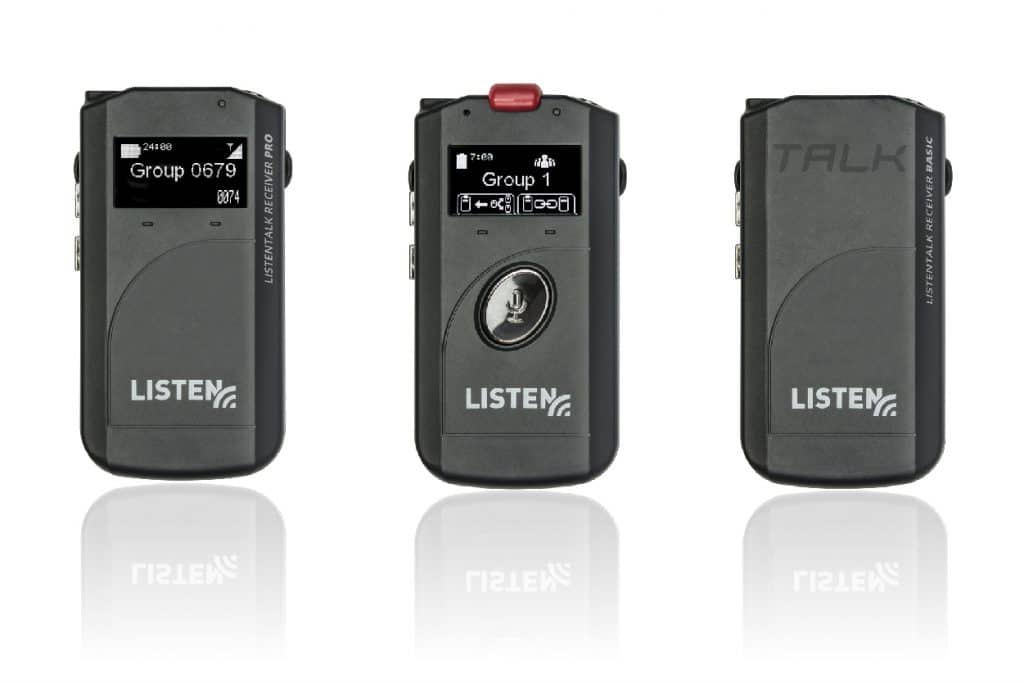Things can get complicated in court, especially in a trial with seven young co-defendants. The confusion compounds when the court’s English must be translated into three other languages – simultaneously.
That’s the scenario that the
Oregon Judicial Department faced recently when seven youths were on trial for alleged rioting. One of the defendants spoke only Spanish, one set of parents spoke only Marshallese and another set spoke only Truukese. The court’s dilemma was to find a way to move the proceedings along without having to wait for three translations each time someone spoke.
Enter
Listen Technologies Corporation language interpretation system. This product allows interpreters in remote locations to speak into wireless microphones, transmitting their words directly to the defendant. When the defendants answer questions, their words are funneled back through the interpreter into open court. Listen’s easy push-button frequency adjustments allow the court to set frequencies so that two interpreters speaking in different languages can use them at the same time.
“Without the
Listen equipment, we would either have to have a technician there with us, or we would not have been able to do three languages at once at all,” said James B. Comstock, the interpreter supervisor for the
Oregon Judicial Department and an interpreter himself. “I love the Listen transmission and its easy frequency changing.”
The systems are permanently installed in seven
Oregon courts where they are used daily. A separate portable system goes with Comstock or other interpreters when they travel to remote courtrooms.
The
Listen system uses FM technology to transmit the spoken word from the interpreter directly
to the listener. The interpreter speaks into a microphone and a transmitter sends the signal to the small battery-powered receivers worn by the defendants. A headset or ear bud carries the sound to the defendant’s ears.
With the
Listen system, the interpreter does not have to sit near the defendant. Comstock said that is good for two reasons.
“The wireless equipment lets the interpreters sit as far away from the defendants as they want to,” he said. “It’s safer for the interpreter, and more pleasant, since defendants can also have hygiene issues. It also does not project an incorrect perception to the jurors that the interpreters are helpers or sympathetic to the defendants.”
Comstock also likes the Listen system for what he called relay interpretation. In one case, when one defendant spoke only a pre-Columbian language known as Mixteco, and no interpreters were available who spoke both Mixteco and English, a third language had to be looped in. So the defendant spoke Mixteco into his microphone, which was wirelessly transmitted to a Mixteco speaker who translated into Spanish. That was wirelessly transmitted to a third person, who interpreted for the court from Spanish into English. Again, all of it was done simultaneously, and from remote locations.
“That way, there weren’t three people talking all at the same time in a confined area, which can get very loud and confusing,” Comstock said. “The interpreters or the defendants can speak very quietly into the microphones.”
Comstock was able to change frequencies by pushing buttons, rather than calling in a technician to reprogram the transmitters to use separate frequencies.
Comstock said the ease of changing frequencies made the otherwise complex interpretation relay simple. The frequency agility also comes in handy in courthouses because they often share buildings or are in close proximity with Sheriff’s offices that have large powerful transmitters atop their buildings for contact with officers in their cars. When the frequencies conflict, Comstock pushes a few buttons and sets up on a new frequency, and he’s ready to go. “I’m very pleased with the
Listen system,” Comstock said.

